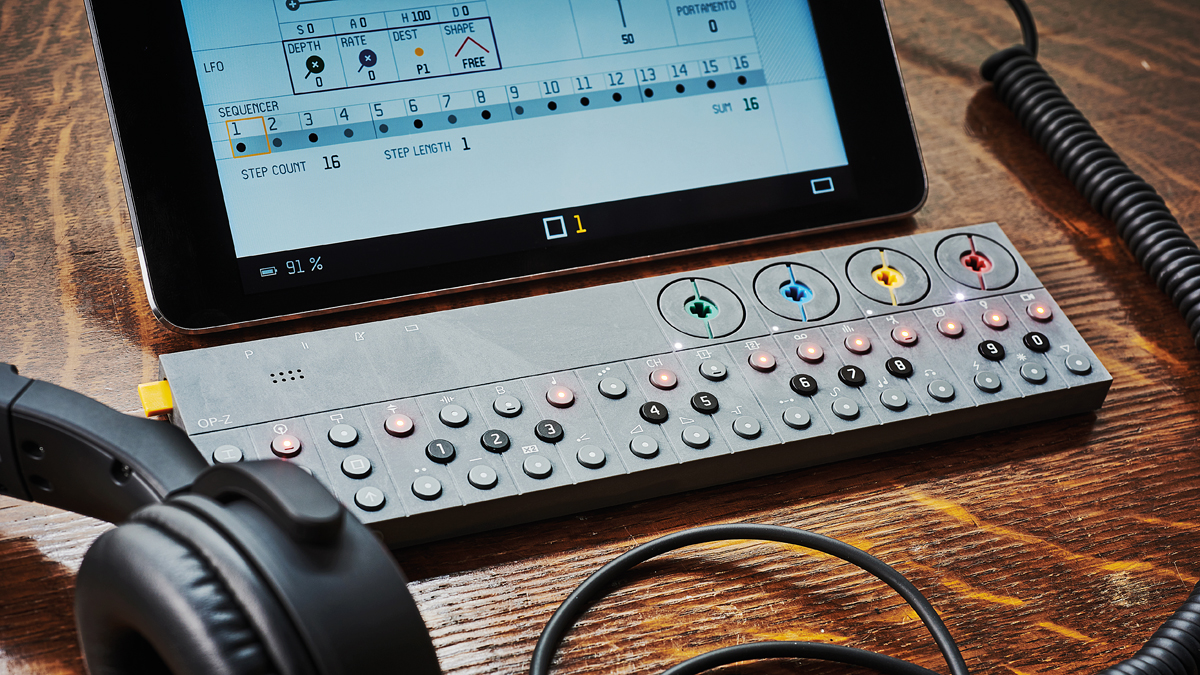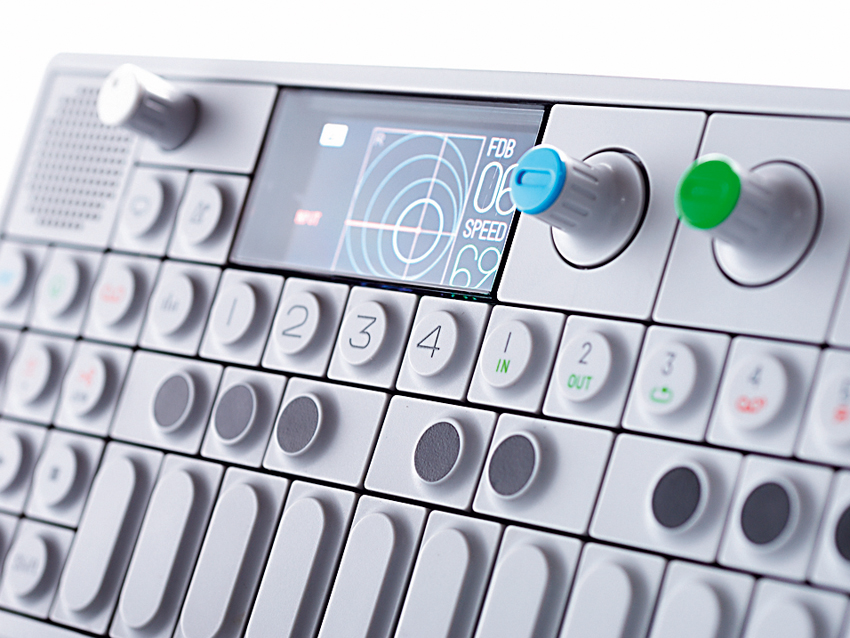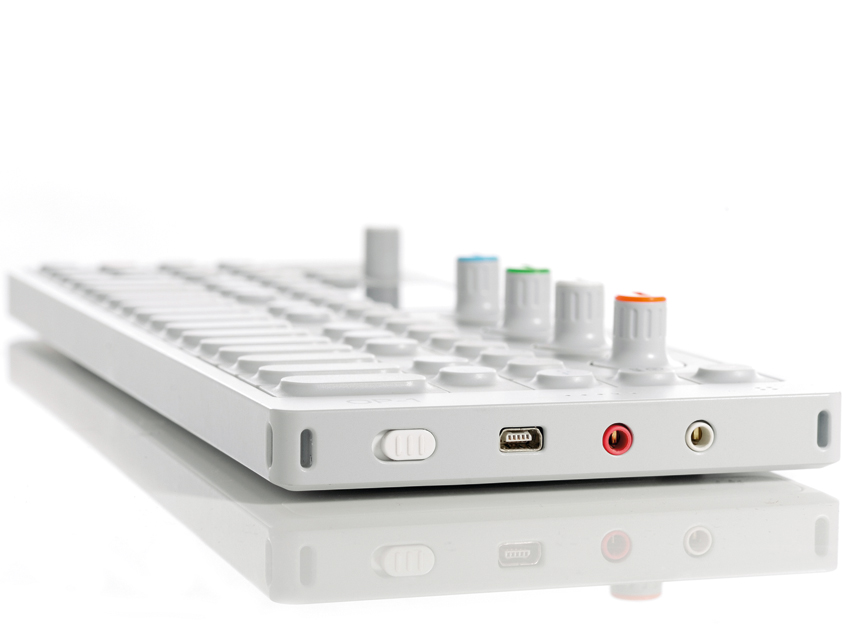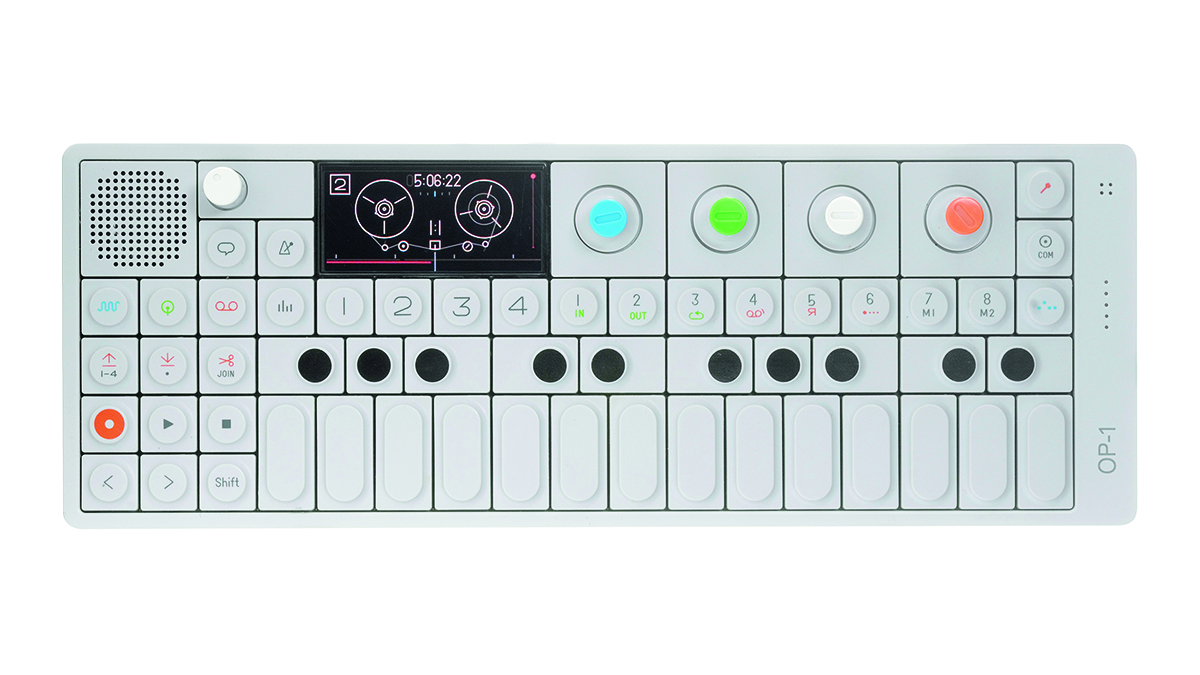MusicRadar Verdict
It's not cheap, but the beautifully designed OP-1 is fun, inspiring and unique sounding.
Pros
- +
Oozes quality.
- +
Innovative and versatile synth engines.
Cons
- -
Price.
- -
Absence of velocity-sensitive keyboard.
MusicRadar's got your back
What is it?
Reviewers are often guilty of exaggerating the excitement surrounding product releases. Every new synth is touted as “long-awaited” and “eagerly anticipated” even if it’s plainly untrue. With that in mind, forgive us the hyperbole in this case.
Teenage Engineering first showed off the prototype OP-1 at the Frankfurt Musikmesse trade show way back in April 2009. Two years of rumours, speculation and gossip later, it’s finally being released. This one time, it’s OK to believe the hype.
One look at the OP-1 and you can see we’re dealing with something unorthodox here. Swedish-based Teenage Engineering has taken a radical approach to every aspect of the OP-1 design, to the extent that it doesn’t quite fit into an obvious category. It’s a synth, a sampler, a drum machine, a multi-track recorder, an effects unit and a controller, but it’s certainly not like any workstation keyboard we’ve seen before.
Even the appearance is undeniably striking: a retro-futurist design somewhere between a MacBook and a prop from 2001: A Space Odyssey. Every last detail of the OP-1’s design is immaculate, from the CNC machined aluminium body of the synth itself to the reusable paper foam packaging in which it’s supplied.
The front panel layout is understandably simple due to the unit’s size, with a two-octave keyboard based around push buttons rather than regular keys. The small screen is a beautifully clear, bright OLED, one of the first we’ve seen on a piece of music gear. Likewise, the speaker may be tiny but a quick bash of the keys reveals it’s impressively loud and bassy considering its size. It’s slightly disappointing to learn that the keyboard isn’t velocity-sensitive.
If Korg and Akai can build touch sensitivity into their sub-£50 mini controllers, it seems strange that a product in this price range should omit it. On the other hand, the four colour-coded rotary encoders are immediately impressive, based around avionics grade components. Each knob is colour-coded, with its function indicated via the full-colour graphics on the screen.
Sound Engines
The OP-1’s synth section is based around seven sound engines, with more promised in future software updates. If you’re used to virtual analogue synthesis, the digital synth methods employed might be a shock to the system. In fact, it’s fair to say that even if you’re familiar with digital synthesis techniques the OP-1’s approach is a little unorthodox.
Synthesizer Mode is entered with a tap of the blue waveform key, which then allows eight different synth sounds to be set up via the Sound Keys above the keyboard. Keys T1-T4 allow access to the four building blocks of each synth sound – synth engine, envelope, effect and LFO/G-force. All synth engines can be played in polyphonic, monophonic, legato or unison modes with adjustable portamento.
The envelope, effects and modulation may be simple, but the synth editing options are unlike anything we’ve seen before. Each synth offers just four adjustable parameters, with unique graphics representing the settings for each engine.
Some engines – notably the DX7-style four-operator FM engine and the physical modelling String setting – are reasonably accessible to those who’ve dabbled with synthesis before. Other settings – such as the 8-bit-sounding Dr Wave “frequency domain synthesis”, the Cluster “multi-layered oscillator cluster” or the “true digital synthesis” Digital engine – are less intuitive.
The documentation for the synth looks great, but it’s light on detail, offering little more than a list of parameter names for each synth engine. You’re sure to find yourself creating some great sounds by adjusting arcane settings such as the “Unitor” of the Cluster engine, but it may not be obvious what you’re actually controlling behind the flashy graphics.

• Teenage Engineering OP-Z
Unique, inspirational and a lot of fun - the OP-Z looks set to be another future cult classic, despite a few design quirks and limitations.
• Novation Circuit Tracks
Another fun, inspirational and portable machine. What it lacks in sampling, it more than makes up for in price.
The good news is that it doesn’t seem to matter. Even if you twist the controls at random, you’ll probably end up at a usable sound. Synth patches can be “dumped to tape” – saved to the internal audio recorder – or saved as presets, but the process is slightly convoluted, involving renaming snapshots by connecting the OP-1 to a computer. It’s easy to excuse the odd omission in early firmware releases, but this really seems like something which should have been a little more polished right from the start.
In comparison to the synth options, sampling on the OP-1 is relatively basic. The sampler engines can be used to resample any sound at any time from inside the synth, or to capture a sound from the line-in, mic or FM radio. The drum sampling section is based around a single sample up to 12 seconds long, which is then sliced into sections and spread across the keyboard.
Samples and synths can both be spiced up with a small selection of effects, which include excellent spring reverb, delays and the great digital Phone effect. Like the synth engines, we’d expect more sampler options and effects to be included in future firmware updates.

Performance and verdict
Once you’ve started experimenting with sounds you’ll want to create songs instead of just noodling around. Rather than offering MIDI recording features, the OP-1 focuses on audio recording, built around a virtual four-track “tape machine” and a series of clever editing options.
Thankfully editing recordings is a bit easier than using a real tape machine, with the ability to slide individual takes backwards and forwards, “lift and drop” (essentially copy and paste) sections, and perform a series of “tape tricks” such as loops, reverse recording and breaks.
The tape can even be beat-synced to the internal clock tempo. It’s clearly an unusual approach, but it works remarkably well as a central focus for the workstation concept, tying the device together as a standalone music-making tool.
Teenage Engineering is keen to point out that the 16-hour battery life is enough to fly across the Atlantic Ocean and back. If you could only take one piece of gear on a flight or long train journey, its all-in-one approach would make it a great choice.
There’s something inherently likeable about the OP-1. It’s colourful, it’s portable and using it makes us feel like we’re playing with a very powerful toy. Since when has that been a bad thing?
Of course, you can also control it via MIDI and record its audio output into your DAW if you prefer. Although there’s no MIDI sequencer, you’ll find pattern sequencing options hidden under a button marked with three blue dots.
The Endless sequencer accepts up to 256 notes in step recording mode, then plays the sequence back when you hit a key.
The Pattern sequencer is a traditional grid-based 16 step sequencer, equally useful for drums or synths.
Finally, in the slightly more wacky Tombola sequencer notes are represented by tiny balls which bounce around in a polygon, with gravity and rotation affecting their timing as they trigger synths or drums.

Conclusion
Since 2009, the OP-1 has been touted as an intuitive musical tool with a radical new approach. Even a quick hands-on session confirms that the hype is justified. The incredible build quality is backed up by an unorthodox but effective synth engine, excellent effects and that quirky tape recorder. Our only real complaint is the absence of velocity control.
There’s something inherently likeable about the OP-1. It’s colourful, it’s portable and using it makes us feel like we’re playing with a very powerful toy. Since when has that been a bad thing?
Don’t expect analogue-style synth sounds, but take the OP-1 on its own terms and you’ll discover that its synth engines can create a broad range of highly usable tones.
A few sceptical commentators have questioned whether a market exists for an expensive portable keyboard with limited synthesis options and such an unconventional approach to almost every aspect of its design. But when a synth is this much fun, this inspiring and this enjoyable, it’ll find its place in the market.
MusicRadar verdict: It's not cheap, but the beautifully designed OP-1 is fun, inspiring and unique sounding.
The web says
"The OP1 draws you in with Furby‑like cuteness. Although you will probably wince at the bottom line, it packs a whole lot of slick, creative and approachable technology into a very small and well-designed box."
Sound On Sound
Hands-on demos
True Cuckoo
SonicState
Specifications
- Seven synth engines plus drum and synth sampling
- Excellent track and master effects including reverb, delay and filtering
- Four track virtual tape recorder
- 3-axis motion sensor: (G-Force), Assignable to any synth, envelope, effect parameter or to pitch
- Built-in 1800mAh Li-Ion battery. 16 hours active battery life, 2 years standby time, charged via USB port
- One-piece CNC aluminium design, full colour 60fps 320x160 pixel AMOLED screen, reusable paper foam packaging, built-in radio
- Dimensions: 282 x 102 x 13.5mm
- Weight: 580g
- Contact: Teenage Engineering
Future Music is the number one magazine for today's producers. Packed with technique and technology we'll help you make great new music. All-access artist interviews, in-depth gear reviews, essential production tutorials and much more. Every marvellous monthly edition features reliable reviews of the latest and greatest hardware and software technology and techniques, unparalleled advice, in-depth interviews, sensational free samples and so much more to improve the experience and outcome of your music-making.
"It was ugly, like watching a divorce between four people. After a while, I had to get out": Beatles engineer Geoff Emerick on the recording of Abbey Road, track-by-track
"I said, “What’s that?” and they said, “It’s what Quincy Jones and Bruce Swedien use on all the Michael Jackson records": Steve Levine reminisces on 50 years in the industry and where it’s heading next
“Excels at unique modulated timbres, atonal drones and microtonal sequences that reinvent themselves each time you dare to touch the synth”: Soma Laboratories Lyra-4 review











